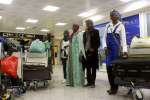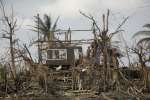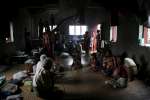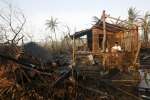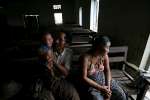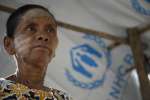- Text size
 |
|  |
|  |
| 
- Français
Japan: First Myanmar refugees arrive for resettlement
Briefing Notes, 28 September 2010
This is a summary of what was said by UNHCR spokesperson Andrej Mahecic – to whom quoted text may be attributed – at the press briefing, on 28 September 2010, at the Palais des Nations in Geneva.
After spending up to 25 years in a refugee camp in Thailand, three families from Myanmar arrived in Japan today to begin new lives under Asia's first-ever pilot resettlement programme.
The 18 refugees – three married couples and their 12 children, aged one to 15 – stepped off a six-hour overnight flight at Narita airport near Tokyo early this morning to begin new lives in Japan. Japan pledged in December, 2008, that it would accept 90 Myanmar refugees from Mae La camp in northern Thailand over three years.
Two other families, one with four children and another with three children, had to stay behind in Bangkok at the last minute because they were suffering from flu. They are expected to travel as soon as they get well. The families, who are farmers of the Karen ethnicity, fled Myanmar between 1985 and 2001. The parents range in age from 28 to 45, and almost all the children were born as refugees in Thailand.
This flight marks a new chapter in Japan's strengthening of its refugee and asylum policies. Japan is UNHCR's second-largest donor. Not only does the country provide generous financial support for refugees in many parts of the world, but it now also provides a future for refugees in the country. We very much hope Japan will set an example in resettlement for other Asian countries to follow.
Japanese officials first visited Mae La camp to select refugees for resettlement in February this year. Initially the families will settle in Tokyo, where the Japanese government will give them generous assistance in integrating during their first six months.
While still in Mae La, the refugees took lessons in adapting to Japanese culture, and some rudimentary Japanese language lessons. In Tokyo, they will be given apartments, more language lessons, and help in adapting to the culture, as well as vocational training and support in finding a job.
The next two groups of 30 refugees are to follow in one and two years' time. Some 20,500 refugees have already been resettled from Mae La camp, among the nearly 61,000 Myanmar refugees who have been resettled from the nine camps in Thailand since large-scale resettlement began in 2005. Most have gone to the United States, Australia and Canada, with a smaller number departing for eight other countries, including New Zealand. With so many refugees having been resettled, the population of Mae La has fallen to just under 30,000, but it remains the biggest refugee camp along the Thai-Myanmar border.















